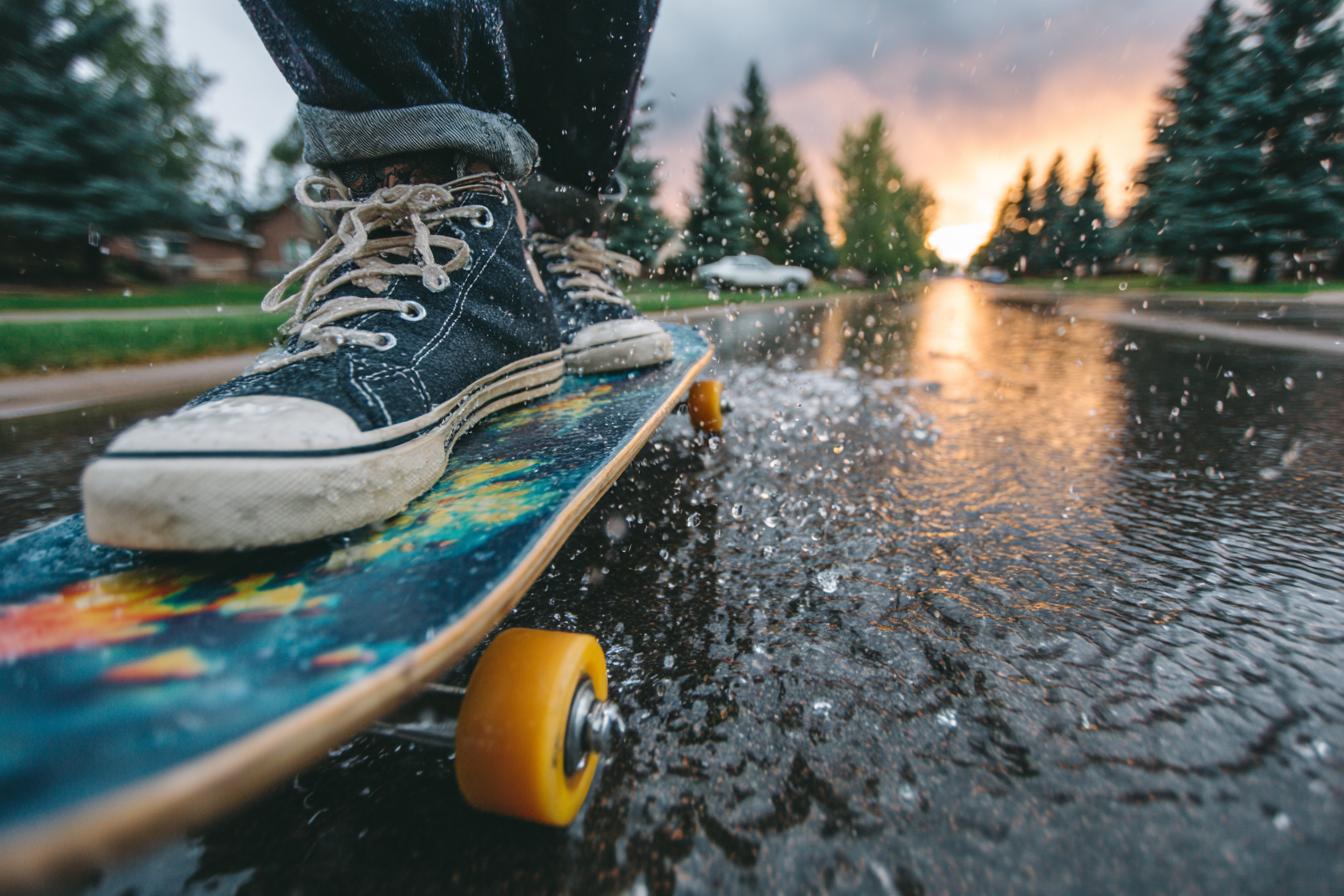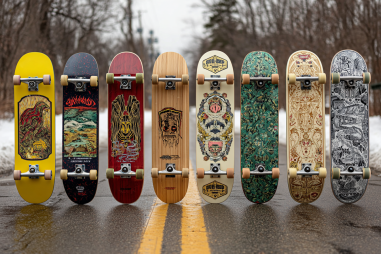Skateboarding is a thrilling activity that many enthusiasts enjoy year-round, but the whims of nature can sometimes rain on your parade—quite literally. When the skies open up and water accumulates on your favorite skate spots, the challenges multiply. Wet pavement can be slippery, and the usual tricks and maneuvers might not behave as expected. However, skateboarding in rainy weather doesn’t mean you have to pack up and wait for the sun. With some smart precautions, the right equipment, and a cautious approach, you can keep shredding safely and even have fun mastering new skills in less-than-ideal conditions.
Understanding the Risks of Wet Surfaces
Before you roll out in the rain, it’s essential to understand why wet surfaces pose such challenges for skateboarders. When pavement or concrete is wet, it can become extremely slippery, reducing the grip your wheels have on the ground. This makes controlling your skateboard trickier and increases the risk of falls and injuries.
Additionally, water can seep into the bearings and hardware of your skateboard, leading to rust and damage if not addressed promptly. Wet roads can also hide debris like leaves or small rocks that might cause you to lose balance. Knowing these risks can help you better prepare and adapt your skateboarding style accordingly.
Protective Gear for Rainy Conditions
Wearing the right protective gear is always important, but it takes on even greater significance when skateboarding in the rain. Here’s what you should prioritize:
- Helmet: A high-quality helmet that fits well will protect your head in case of falls, which can be more frequent on slippery surfaces.
- Water-resistant Clothing: Opt for jackets and pants made from waterproof or water-resistant materials to keep you dry and comfortable.
- Gloves: Waterproof gloves not only keep your hands warm but also improve grip when you need to steady yourself, especially when pushing off.
- Knee and Elbow Pads: Extra padding can reduce injuries, especially as falls become more likely.
- Proper Footwear: Choose skate shoes with good traction and that can handle wet conditions without soaking your feet.
Techniques for Maintaining Balance and Control
Skateboarding on slick, rainy surfaces requires you to modify your technique to maintain control and reduce the risk of slipping. Here are some tips:
- Lower Your Center of Gravity: Bend your knees slightly more than usual to keep balanced and absorb shocks.
- Take It Slow: Avoid sudden turns or tricks at high speeds. Gradual, controlled movements reduce the chance of slipping.
- Focus on Your Weight Distribution: Shift your weight carefully toward the board’s center and lean into turns gently.
- Practice Sliding with Caution: If you want to slide, be sure to test surfaces slowly to understand how slippery they are.
- Push with More Care: When pushing off the ground, do so gently to avoid slipping with your foot.
Best Skateboards and Wheels for Wet Weather
Not all skateboards perform equally in wet conditions. To enhance your rainy day experience, consider these equipment tips:
- Deck Material: Skateboards made from water-resistant materials or deck coatings are less likely to absorb water and warp.
- Grip Tape: Standard grip tape can lose its effectiveness when wet. Look for grip tapes specifically designed to maintain traction in damp environments.
- Wheels: Softer wheels (78A–87A) tend to provide better grip and smoother rides on wet surfaces compared to harder wheels, which are more slippery.
- Bearings and Hardware: Sealed bearings help keep water and debris out, maintaining smooth wheel rotation and extending lifespan.
How to Care for Your Skateboard After Rain Exposure
After skating in the rain, your board will need some care to ensure it stays in good shape and ready for your next session. Follow these post-rain maintenance tips:
- Dry It Thoroughly: Wipe down your deck, trucks, wheels, and bearings with a dry towel as soon as you finish skating.
- Remove and Clean Bearings: Take out your bearings, dry them, and apply lubricant to prevent rust and corrosion.
- Check the Deck: Inspect your deck for any signs of water damage like warping or delamination. If caught early, you can sometimes fix minor damage.
- Store Properly: Keep your skateboard in a dry, well-ventilated area to avoid long-term moisture buildup.
Tips for Finding Suitable Indoor Alternatives
When the weather turns too rough or your favorite outdoor spots are too wet, indoor skateparks offer a perfect alternative. Here’s how you can make the most of indoor skating:
- Locate Indoor Skateparks: Many cities have indoor facilities that provide controlled environments perfect for rainy days.
- Check Facility Rules: Each skatepark has different policies on gear and access; make sure you’re prepared accordingly.
- Take Classes or Join Groups: Use the opportunity to learn new tricks or meet other skateboarding enthusiasts.
- Maintain Your Gear: Indoor conditions are typically better for your board, but still clean your gear regularly.
Skateboarding doesn’t have to be a fair-weather activity. With the right mindset, gear, and techniques, rainy weather can become just another backdrop to your skateboarding journey. Embrace the challenge, stay safe, and enjoy the unique thrill that wet pavement brings to your ride!







